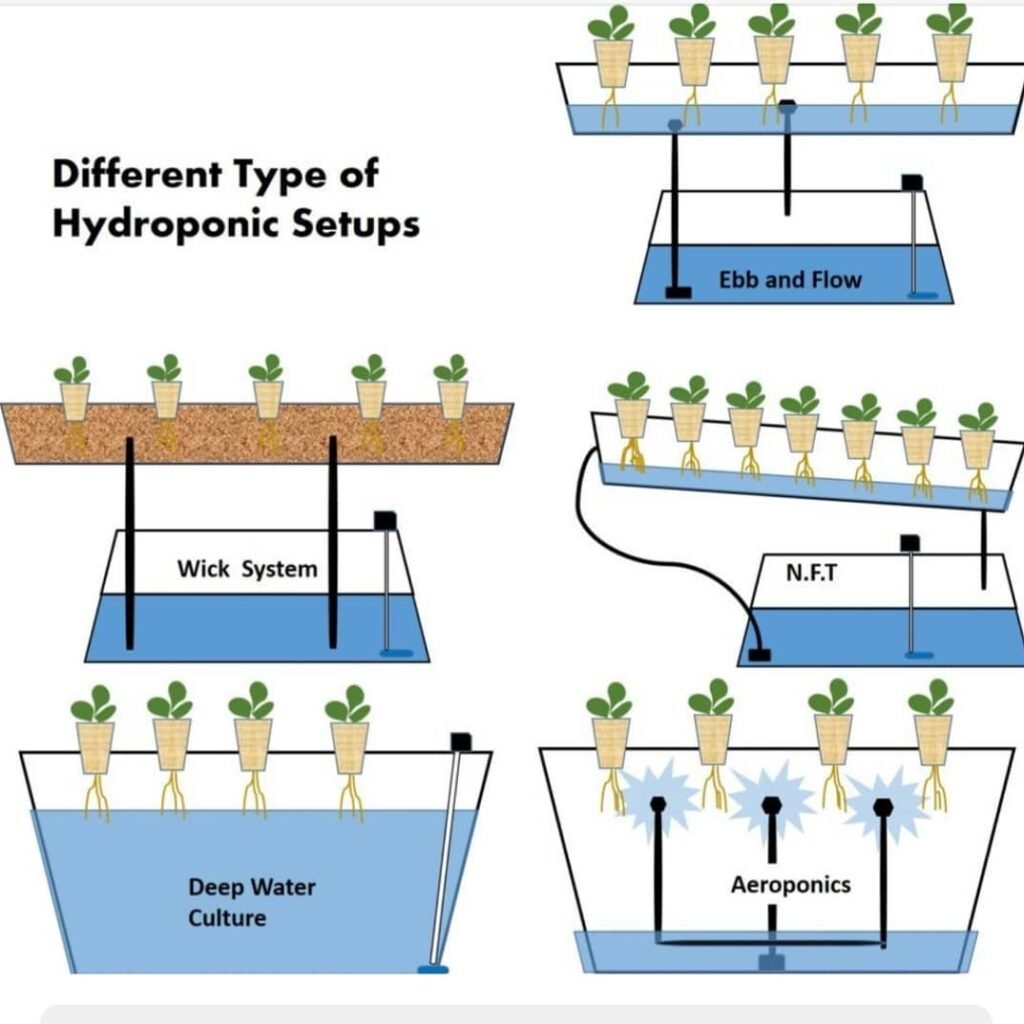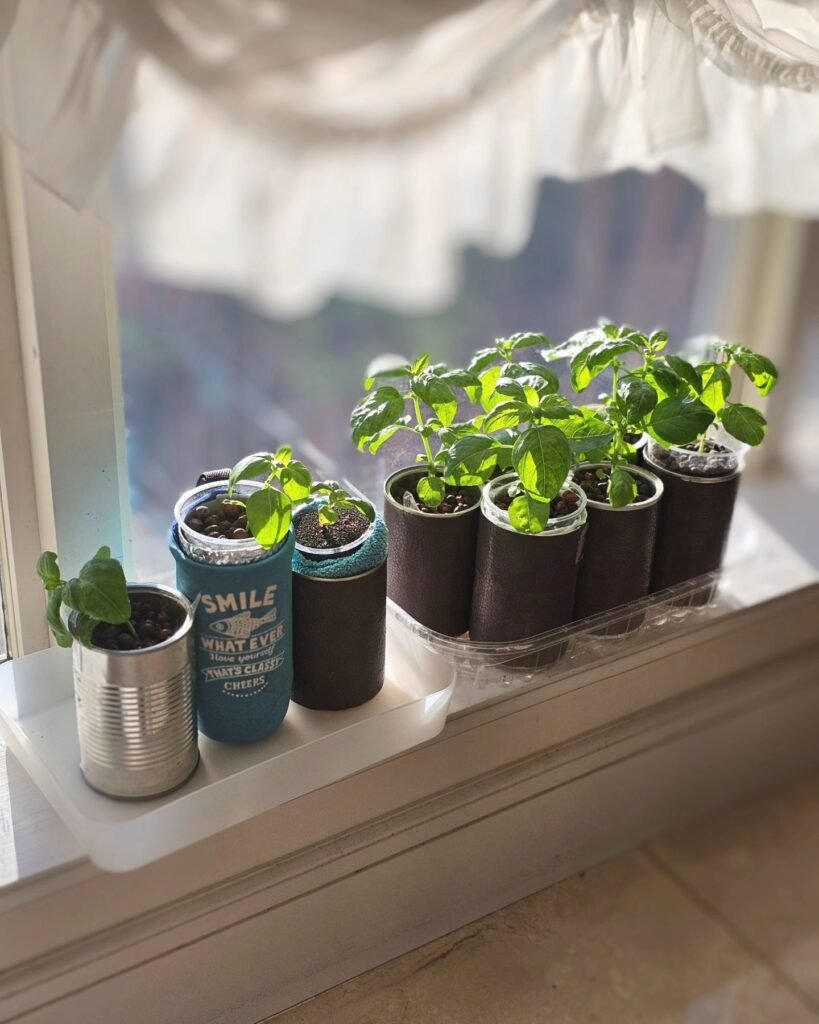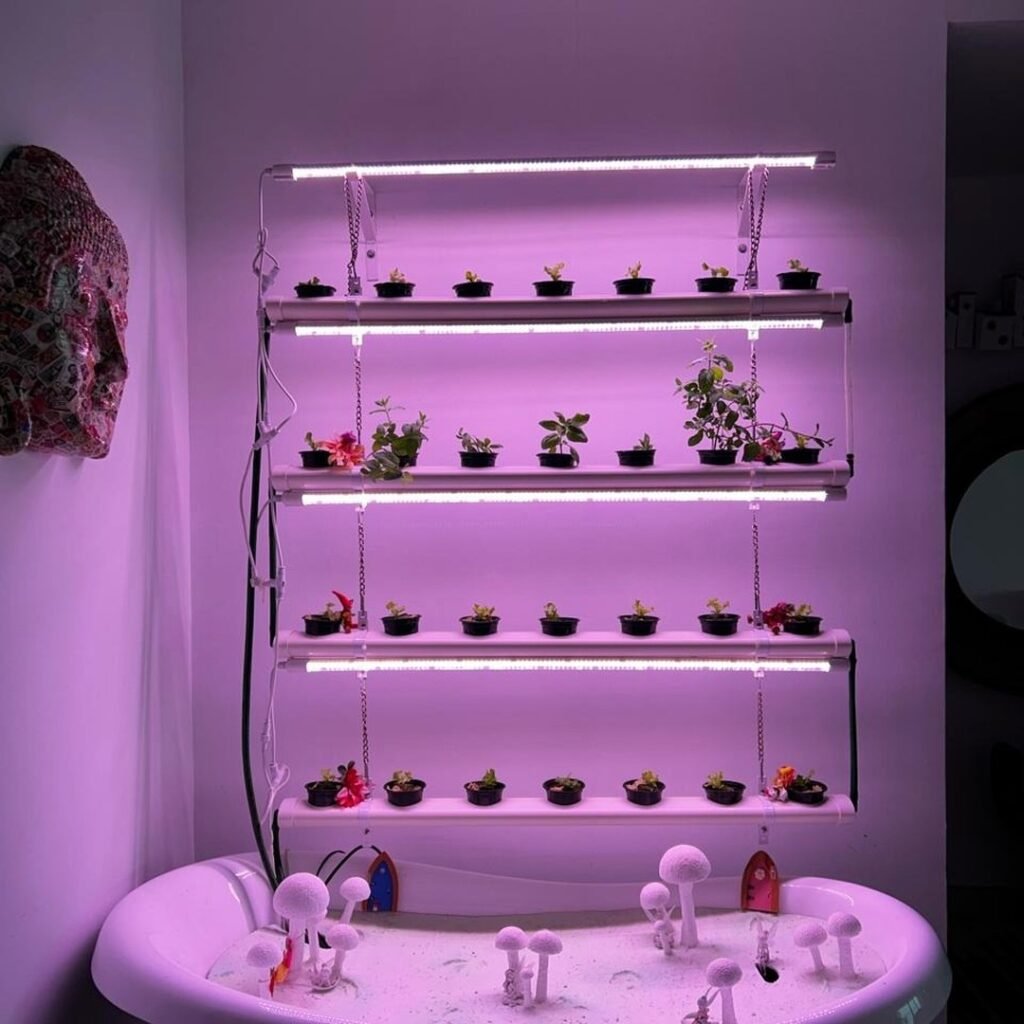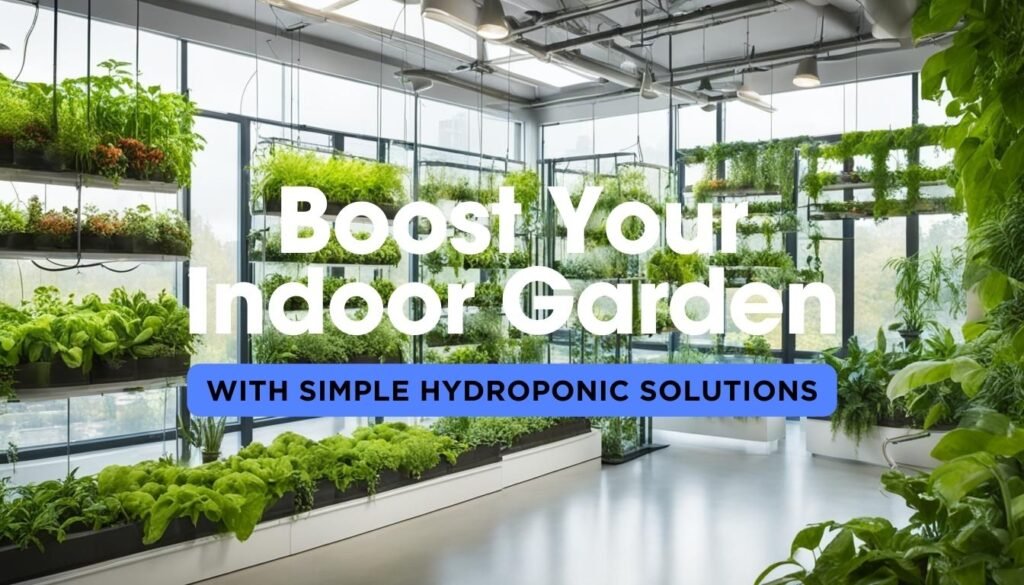Did you know that you can grow salad, tomatoes, and strawberries hydroponically without breaking the bank? In fact, you can set up your own hydroponic system for less than £150, including all the necessary equipment. Hydroponics, which is the art of ‘growing stuff without soil,’ is a cost-effective and efficient way to cultivate your indoor garden. It’s time to explore the wonders of hydroponics and discover how you can achieve flourishing plants without traditional soil-based methods.
What is Hydroponics?
Hydroponics is a method of growing plants without soil. Instead, plants are grown in a nutrient-rich water solution that provides all the necessary nutrients for their growth. This innovative technique has gained popularity among indoor gardening enthusiasts due to its numerous benefits.
Growing plants hydroponically offers several advantages over traditional soil-based gardening. Firstly, it allows for faster growth and higher yields, making it ideal for those who want to maximize their indoor gardening efforts. Additionally, hydroponic systems provide precise control over the nutrient intake of plants, ensuring they receive optimal nutrition for healthy growth.
The key to successful hydroponics lies in the use of a growing medium such as rockwool. This medium provides support for the roots and helps maintain the right balance of moisture and air. Once the seeds have sprouted, they are placed in a basket or container filled with water and nutrient solution. A pump is then used to circulate the water, ensuring the plants receive oxygen and nutrients.
To feed the plants in a soilless environment, hydroponic nutrients are added to the water. These nutrients contain all the essential elements necessary for the plants’ growth, such as nitrogen, phosphorus, and potassium. By carefully controlling the nutrient solution, hydroponic gardeners can provide their plants with the optimal balance of nutrients.
Hydroponic systems are versatile and can be set up in a variety of ways, ranging from simple homemade systems to more complex commercial setups. Whether you have limited space or are looking to expand your indoor gardening capabilities, hydroponics offers a flexible and efficient solution.
Choosing the Right Hydroponic System
When it comes to hydroponic systems, there is a wide variety to choose from. Each type of system has its own set of advantages and disadvantages, making it important to select the one that best suits your specific needs. Factors such as available space, budget, and the types of plants you want to grow should be considered when making your decision.
Some popular hydroponic systems include Deep Water Culture (DWC), Nutrient Film Technique (NFT), and Drip Systems. Deep Water Culture involves suspending the plant’s roots in a nutrient-rich water solution. NFT systems use a shallow channel to continuously flow a thin film of nutrient solution over the plant’s roots. Drip systems, on the other hand, deliver a precise amount of nutrient solution to each plant through individual drippers.
For those starting out with hydroponic gardening at home, home hydroponic systems are a great option. These systems are designed for small-scale indoor gardening and are more user-friendly for beginners. They are often compact and easy to set up, making them ideal for individuals with limited space.
Vertical hydroponic systems have gained popularity due to their ability to maximize space. These systems allow for vertical stacking of plants, making them perfect for small apartments or areas with limited outdoor space. By utilizing vertical space, you can grow more plants in a smaller footprint, increasing your overall yield.
Whether you opt for a Deep Water Culture system, Nutrient Film Technique, Drip System, home hydroponic system, or vertical hydroponic system, the key is to choose the system that aligns with your requirements, allowing you to grow a thriving hydroponic garden.

Setting Up Your First Hydroponic Garden
Setting up a hydroponic garden is an exciting venture that doesn’t require a lot of space or investment. To get started, you’ll need a few essential supplies and some basic knowledge about hydroponic systems. Let’s explore the key components necessary to set up your first hydroponic garden.
1. Water Pump
A water pump is an essential component of any hydroponic setup. It circulates the water, ensuring that nutrients are delivered to the roots of your plants. Look for a reliable and energy-efficient water pump to keep your garden thriving.
2. Water Reservoir Container
Your hydroponic garden will need a container to hold the water reservoir. Choose a lightproof container to prevent the growth of algae, which can hinder plant growth. Ensure that the container is large enough to accommodate the size of your hydroponic system and provides easy access for maintenance.
3. Grow Baskets or Containers
Grow baskets or containers are used to hold the plants in your hydroponic garden. These containers allow the roots to come into contact with the nutrient solution. Consider the size and material of the baskets or containers based on the type of plants you intend to grow and the space available in your hydroponic setup.
4. Nutrient Solution
The nutrient solution is crucial for providing plants with the necessary nutrients for growth. It contains a carefully balanced mixture of essential elements, including nitrogen, phosphorus, and potassium. Regularly monitor the nutrient levels and adjust as needed to ensure healthy plant development.
Setting up your hydroponic garden is an opportunity to experiment and nurture your plants in a controlled environment. By investing in quality hydroponic supplies and paying attention to the needs of your plants, you can create a thriving indoor garden that yields impressive results.

Best Plants for Hydroponic Beginners
When it comes to hydroponic gardening, certain plants are more suitable for beginners. Lettuce, kale, and basil are popular choices for those starting out, as they are relatively easy to grow and offer abundant yields. These plants thrive in nutrient-rich environments, making them perfect for hydroponic systems. What sets them apart is their shallow root systems, which adapt well to the controlled conditions of hydroponics. By providing the right balance of nutrients, light, and temperature, you can ensure the successful growth of lettuce, kale, and basil in your hydroponic setup.
In addition to lettuce, kale, and basil, there are other plants that you can grow hydroponically. Chard, bok choy, and parsley are also well-suited to hydroponic systems. Just like lettuce, kale, and basil, these plants benefit from the nutrient-rich environments provided by hydroponics. Experimenting with different plants can be exciting and rewarding, allowing you to explore a variety of flavors and textures.
To choose the best plants for your hydroponic setup, consider factors such as light requirements, temperature preferences, and available space. Some plants may require specific lighting conditions or thrive in certain temperature ranges. By understanding the needs of each plant, you can create an ideal environment for their growth and maximize your hydroponic gardening success.
Tips:
- Lettuce, kale, and basil are ideal plants for starting a hydroponic garden.
- They thrive in nutrient-rich environments and have shallow root systems.
- Other plants like chard, bok choy, and parsley can also be grown hydroponically.
- Consider factors like light and temperature requirements when choosing plants for your hydroponic setup.
Nutrient Solutions and Water Management
Nutrient solutions play a critical role in hydroponic systems, providing the essential nutrients needed for plant growth. These solutions consist of a carefully balanced mixture of key elements such as nitrogen, phosphorus, and potassium, along with trace minerals. Regular monitoring and adjustment of the nutrient solution are crucial to ensure that plants receive a well-balanced supply of nutrients without any deficiencies or excesses.
Water management is equally important in hydroponics, as water is the medium through which nutrients are delivered to the plants. Maintaining appropriate water levels and pH is vital for optimal plant health and growth. Regular monitoring of water levels ensures that plants receive an adequate supply of water and nutrients, while preventing issues such as root rot or nutrient imbalances. pH levels must also be monitored regularly and adjusted as needed to create the ideal growing environment for the plants.
The Role of Nutrient Solutions
Hydroponic nutrient solutions are carefully formulated to provide plants with all the essential elements required for healthy growth. These solutions often contain a blend of macronutrients, micronutrients, and chelates to ensure a well-rounded nutrient profile. Macronutrients such as nitrogen, phosphorus, and potassium are required in larger quantities, while micronutrients like iron, zinc, and manganese are needed in smaller amounts. Chelates help to improve nutrient availability and uptake by the plants.
The nutrient solution should be monitored regularly using a conductivity meter or a total dissolved solids (TDS) meter to measure the concentration of dissolved salts. Adjustments can be made by diluting or adding nutrients to maintain the desired nutrient levels. It is important to follow the instructions provided by the nutrient solution manufacturer and make adjustments based on the specific requirements of the plants being grown.
Water Management in Hydroponics
Water is a vital component of hydroponic systems as it serves as the delivery mechanism for nutrients. It is important to maintain the proper water level in the system to ensure that the roots have access to adequate moisture and nutrients. Water levels can be monitored visually or with the help of sensors. A water pump or air stone can be used to circulate the water, providing oxygen to the roots and preventing stagnation.
Monitoring the pH level of the water is crucial in hydroponics as it affects the availability of nutrients to the plants. The optimal pH range for most hydroponic plants is between 5.5 and 6.5. pH levels can be adjusted using pH up or pH down solutions to maintain the desired range. Regular monitoring ensures that the pH remains within the optimal range, allowing the plants to absorb nutrients efficiently.
Water quality is another important consideration in hydroponics. It is recommended to use filtered water or water that has gone through reverse osmosis to remove any impurities or contaminants that could affect plant health. Monitoring the temperature of the water is also important as it can impact root growth and nutrient uptake. Maintaining water at a temperature between 18-22°C is generally recommended for most hydroponic crops.
By implementing proper water management techniques and maintaining a well-balanced nutrient solution, hydroponic gardeners can ensure healthy plant growth and maximize their yield potential.

Lighting Solutions for Hydroponic Gardens
Proper lighting is crucial for the success of your hydroponic garden, particularly when growing plants indoors. In hydroponics, grow lights are commonly used to provide the necessary light spectrum for optimal plant growth and development.
LED grow lights are a popular choice for hydroponic systems due to their energy efficiency, lower heat generation, and ability to be customized according to specific plant requirements. LEDs also provide the full light spectrum that plants need for photosynthesis and growth.
Alternatively, you can consider using fluorescent lights, which are more affordable and versatile. Fluorescent lights are efficient for smaller hydroponic setups or for starting seedlings. They are available in various spectrums to cater to different growth stages of plants.
For larger hydroponic gardens, high-intensity discharge (HID) lights can be a suitable option. The two main types of HID lights used in hydroponics are metal halide (MH) lights, which provide a blue-white light spectrum for vegetative growth, and high-pressure sodium (HPS) lights, which emit an orange-red spectrum that is ideal for flowering and fruiting stages.
When choosing the right lighting solution for your hydroponic garden, consider factors such as the size of your garden, the types of plants you are growing, and your budget. It’s important to ensure that your plants receive the proper amount and quality of light to thrive and achieve optimal yields.
Maintaining Your Hydroponic Garden
Regular maintenance is crucial for the success of a hydroponic garden. As an indoor gardener, I understand the importance of monitoring and adjusting nutrient levels, pH levels, and water temperature to ensure optimal plant growth.
One key aspect of maintaining hydroponic gardens is monitoring and adjusting nutrient levels. Nutrients are essential for the plants’ growth and development, and it’s important to ensure that they receive the proper balance of nutrients. Regular monitoring and adjustments of hydroponic systems will prevent nutrient deficiencies or imbalances that can negatively affect plant health.
Another crucial factor to consider is maintaining the pH levels within the optimal range of 5.5 to 6.5. The pH level affects the plants’ ability to absorb nutrients, and a pH imbalance can hinder their growth. Regular testing and adjustments for maintaining hydroponic gardens are necessary to ensure that the plants can access the nutrients they need.
In addition to nutrient and pH level monitoring, it’s important to pay attention to the water temperature in your hydroponic system. Extreme temperatures can stress the plants and affect their overall health. Monitoring the water temperature and using appropriate temperature control mechanisms, such as water chillers or heaters, will help maintain an ideal environment for your plants’ roots.
Proper cleanliness is also vital for maintaining hydroponic gardens. Regular cleaning and disinfection of the hydroponic system will help prevent the growth of algae and pathogens that can harm your plants. By keeping your system clean, you ensure a healthy and disease-free environment for your plants to thrive.
As an indoor gardener, I’ve learned that hydroponic systems require care and attention to detail. By regularly monitoring and adjusting nutrient levels, pH levels, and water temperature, as well as maintaining cleanliness, you can ensure the long-term success of your hydroponic garden and enjoy the benefits of growing your own fresh produce.
Scaling Up Your Hydroponic System
If you’re ready to take your hydroponic gardening to the next level, why not consider scaling up your system? With the right approach, you can expand the size of your current setup or invest in a commercial hydroponic system that’s designed for large-scale production. These systems can be customized to suit your specific crops and production goals, allowing you to maximize your yields and efficiency.
When it comes to scaling up, there are various hydroponic system designs and configurations available. One popular option is vertical growing systems, which make efficient use of vertical space and allow you to grow more plants in a smaller footprint. Another option is automated watering systems, which can save you time and effort by automatically delivering the right amount of water and nutrients to your plants.
The choice of scale and design will depend on your goals, the available space you have, and your budget. It’s important to carefully consider these factors to ensure that your scaled-up hydroponic system meets your needs and helps you achieve your desired outcomes. Whether you’re a commercial grower or a passionate enthusiast, scaling up your hydroponic system can open up new possibilities and take your gardening experience to new heights.

